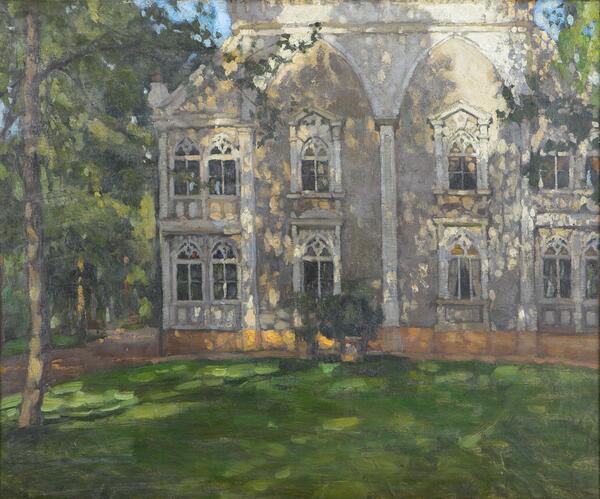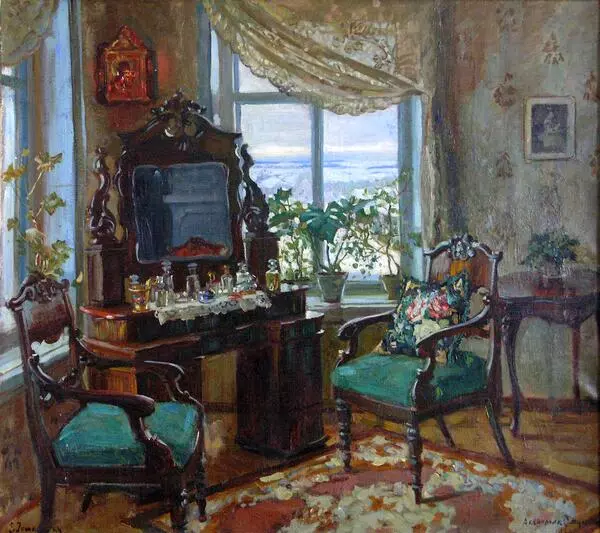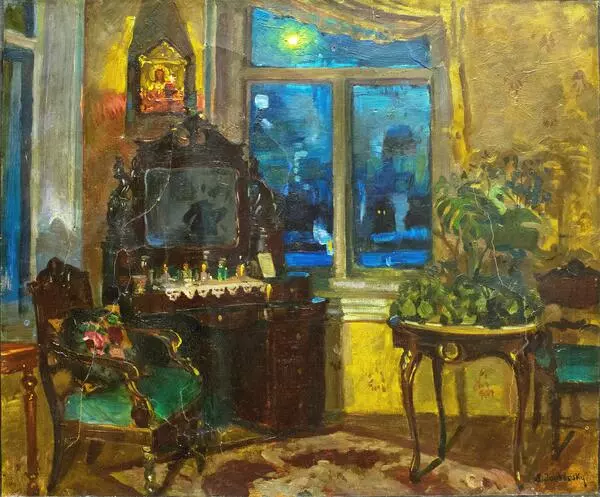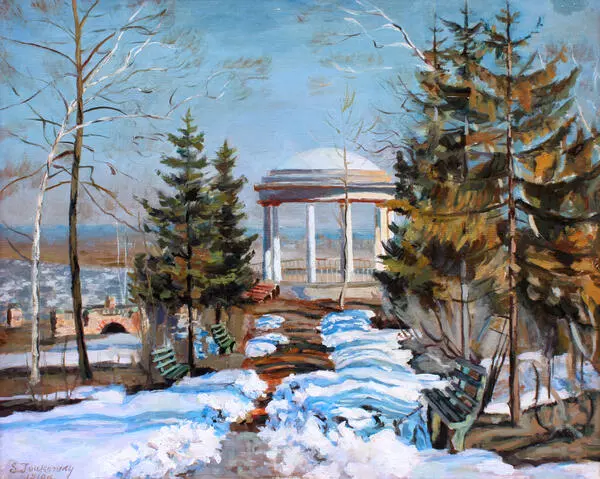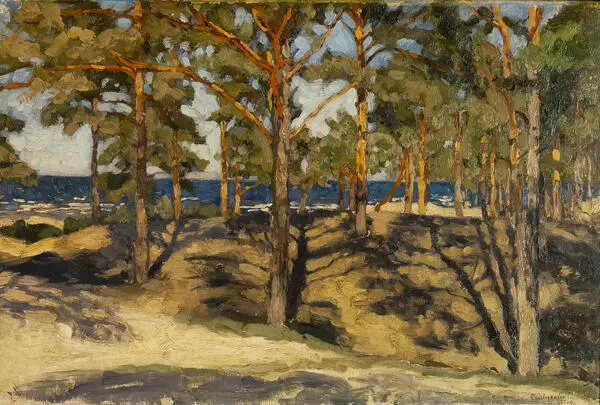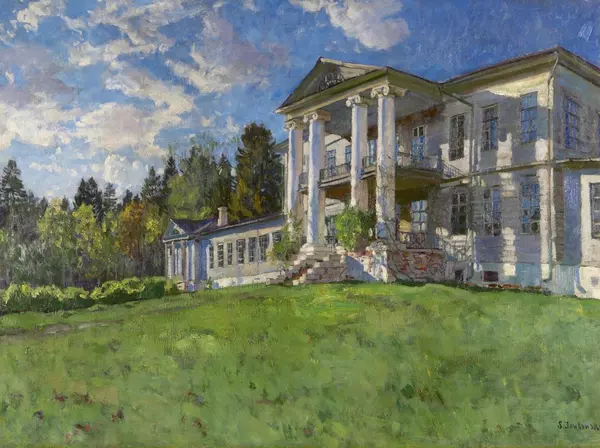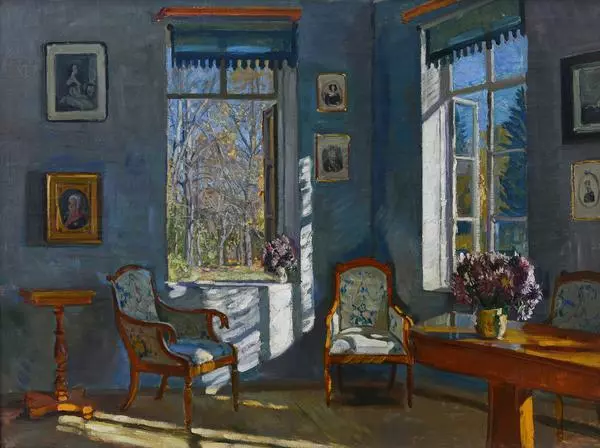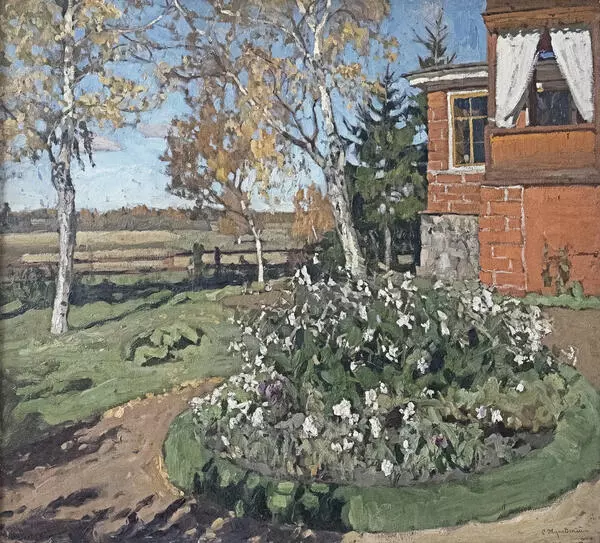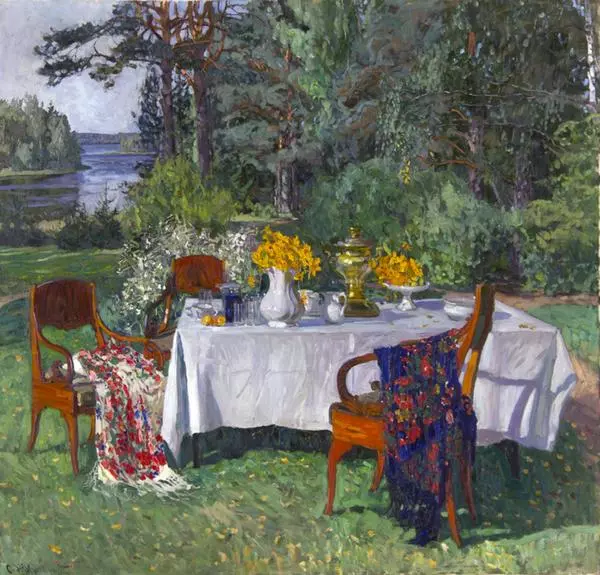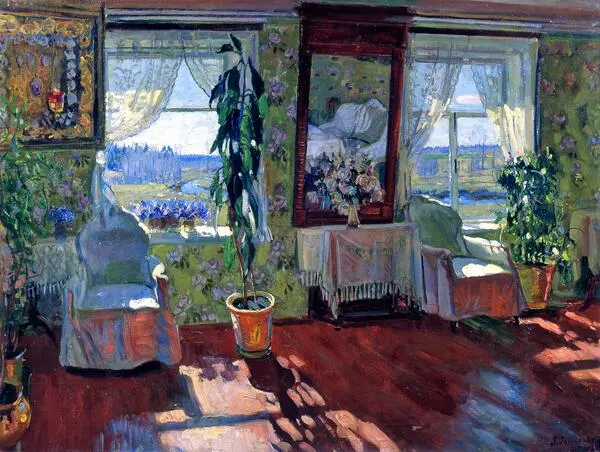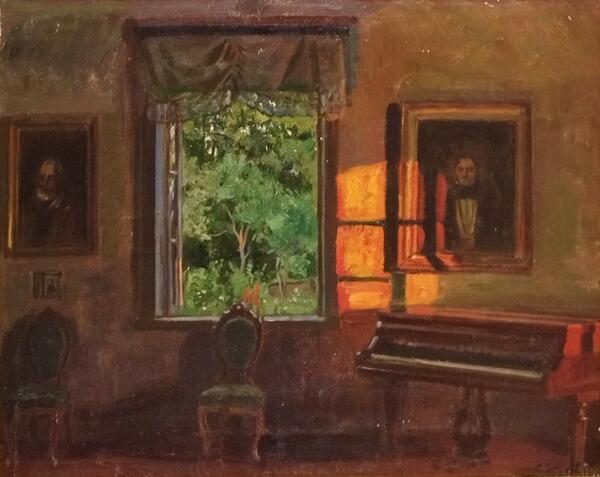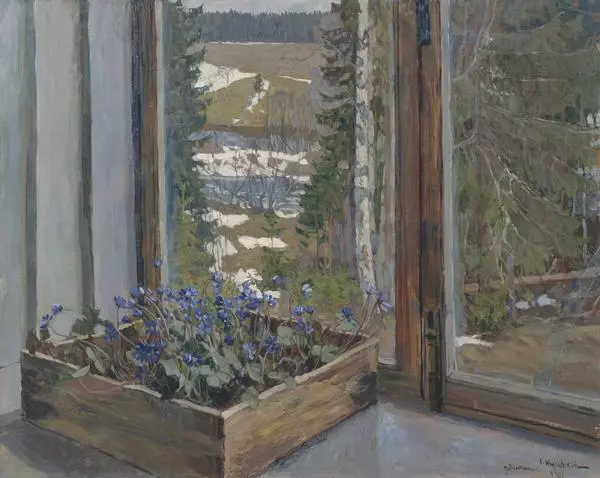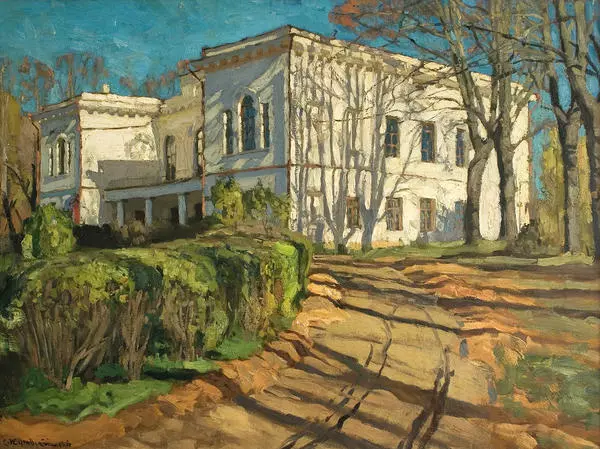Stanislav Zhukovsky was a Russian artist with Polish origins. He was born in the village of Yendrikhovtsy, Grodno province (today it is the territory of Belarus). He graduated from the Moscow school of painting, sculpture and architecture. His artworks were influenced by such great artists as Vasily Polenov, Sergey Korovin, Abram Arkhipov, Leonid Pasternak.
Stanislav Zhukovsky painted portraits, still life pictures, and interior pictures. He is known for his scenery paintings. In 1907, the painter was awarded the title of academician in landscape painting at the Imperial Academy of Arts. At a certain period of time one of this teachers was Isaac Levitan. And Zhukovsky became one of his followers: he created lyrical Russian scenery paintings similar to those which Levitan had been famous for.
Stanislav Zhukovsky always painted from life, he could work irrelevant of the season and paid great attention to light. The artist preferred rich colors. His earlier artworks were restrained and strict in colors, such as ‘Spring water’ and ‘Moonlight night’, he painted those pictures, at the turn of the centuries, then by the end of the first decade of the 20th century, his paintings became more vivid and colorful — ‘March evening’, ‘Dam’. This period between 1900 and 1910 was a real height of his genius.
Gradually Stanislav Zhukovsky became interested in scenery paintings depicting noble manors. Among the major motifs of his paintings were century-old parks, interiors with open windows and doors, shady alleys: ‘Evenfall. “In the abandoned manor”, “The white house”, “Merchant”s house in the fall”, “March evening”. The artist traveled a lot in the central part of Russia and studied old Russian estates. He especially liked to paint manor landscapes in spring and autumn, when the foliage on the trees was not as thick as in summer, the parks seemed translucent, and the sunlight was soft and immersive.
In his artwork “In the Park” Stanislav Zhukovsky painted a summer day: a well-groomed lawn, an exquisitely decorated manor house and a park behind it. The charm of the “cozy corner” is emphasized by the use of the dimmed warm colors, but both the lawn and the house are covered with sun spots which pass through the leaves of the trees. In Zhukovsky’s artworks there were some features of impressionism: we can see this in the painting ‘In the Park’: the artist uses large strokes of pure shades and creates a whimsical play of light and shadow.
Stanislav Zhukovsky painted portraits, still life pictures, and interior pictures. He is known for his scenery paintings. In 1907, the painter was awarded the title of academician in landscape painting at the Imperial Academy of Arts. At a certain period of time one of this teachers was Isaac Levitan. And Zhukovsky became one of his followers: he created lyrical Russian scenery paintings similar to those which Levitan had been famous for.
Stanislav Zhukovsky always painted from life, he could work irrelevant of the season and paid great attention to light. The artist preferred rich colors. His earlier artworks were restrained and strict in colors, such as ‘Spring water’ and ‘Moonlight night’, he painted those pictures, at the turn of the centuries, then by the end of the first decade of the 20th century, his paintings became more vivid and colorful — ‘March evening’, ‘Dam’. This period between 1900 and 1910 was a real height of his genius.
Gradually Stanislav Zhukovsky became interested in scenery paintings depicting noble manors. Among the major motifs of his paintings were century-old parks, interiors with open windows and doors, shady alleys: ‘Evenfall. “In the abandoned manor”, “The white house”, “Merchant”s house in the fall”, “March evening”. The artist traveled a lot in the central part of Russia and studied old Russian estates. He especially liked to paint manor landscapes in spring and autumn, when the foliage on the trees was not as thick as in summer, the parks seemed translucent, and the sunlight was soft and immersive.
In his artwork “In the Park” Stanislav Zhukovsky painted a summer day: a well-groomed lawn, an exquisitely decorated manor house and a park behind it. The charm of the “cozy corner” is emphasized by the use of the dimmed warm colors, but both the lawn and the house are covered with sun spots which pass through the leaves of the trees. In Zhukovsky’s artworks there were some features of impressionism: we can see this in the painting ‘In the Park’: the artist uses large strokes of pure shades and creates a whimsical play of light and shadow.

